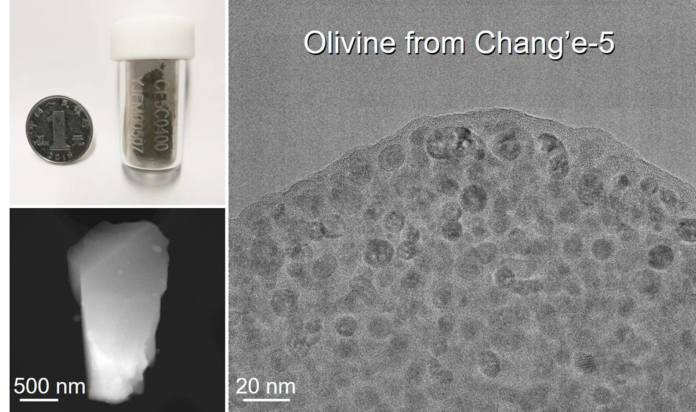A joint team from the Chinese Academy of Sciences examined the microstructures and chemical compositions at nano/atomic scales of 25 soil grains (1-3 m in size) from lunar sample CE5C0400YJFM00507 using aberration-corrected transmission electron microscopy (TEM), electron-energy loss spectroscopy (EELS), and scanning transmission electron microscopy (STEM) (1.5 g).
The minerals olivine, pyroxene, anorthite, and glass beads are prevalent in the soil. Except for the glass bead, the team did not use the focused ion beam (FIB) to cut the bulk samples to avoid possible chemical contamination and ion-bombing-induced amorphization.
First, they identified wüstite FeO nanoparticles rather than npFe0 embedded in amorphous SixOy rims outside the olivine grains. So far, no other lunar, terrestrial, Martian, or meteorite samples have shown this unusual rim structure.
Given that nano-phase Fe is the final product of olivine Fe2SiO4 decomposition, they propose that wüstite FeO may serve as an intermediate state in the thermal decomposition process, and that the FeO may then transform into nano-phase Fe in the presence of cosmic radiation or solar flares.
Surface areas of pyroxene and anorthite have identical chemical compositions to interior parts, and there is no SixOy rim outside sample. Meanwhile, there are no foreign volatile element deposition layers or solar flare tracks on the surface or inside olivine or other minerals.
Such findings suggest that the studied samples are not subjected to severe space weathering, and the underlying mechanism warrants further investigation. They provide hints or constraints on the incipient mechanism of rim structure formation during space weathering.
The findings were published in the journal Science Bulletin.

